Red River Cart-A Study of History
Posted by SHOP PROJECT on Sep 2nd 2020
According to the journal of North West Company fur trader, Alexander Henry, the Red River Cart design made its first appearance in 1801 at Pembina Post, located at the confluence of the Pembina and Red Rivers, just south of what is now the United States border with Canada.
"The pioneers ... were either too busy or it did not occur to them to leave an adequate record of the early development of the cart. Consequently, what little information is available must be gleaned from later scattered references, in which the cart is mentioned incidentally and not as a prime consideration. It was left for a busy fur trader, Alexander Henry, the Younger, who kept a daily journal, to record the first and only information as far as is known about the cart. He relates the making and putting the cart into service at Pembina Post.
In the fall of 1801 the first cart appeared with solid wheels 'sawed off from the ends of logs whose diameter was three feet.' ... In the fall of 1802 'a new sort of cart was made having four perpendicular spokes without the least bending outward.' In the spring of 1803 a further improved cart was put into use, 'having a real pair of wheels on the plan of those in Canada.' These were probably ‘dished’ wheels but Henry does not mention it. This was the beginning of the cart later to be called the Red River Cart." The Red River Cart and Trails: The Fur Trade by Harry Baker Brehaut, P. Eng.
Photo from https://library.ndsu.edu/ available through Hansen Wheel & Wagon Shop.
The Red River Cart is based on "general" standards of construction. This was true due to the fact that components were shaped from the materials available. Wood species would have been determined by the trees growing in the locale where the trapper had his trapline.
Measurements taken from existing old carts vary as to dimensions and sizes of parts as well. Wheels varied as to diameter and number of spokes.The felloes on the wheels were generally wide to keep them from digging into the sod.
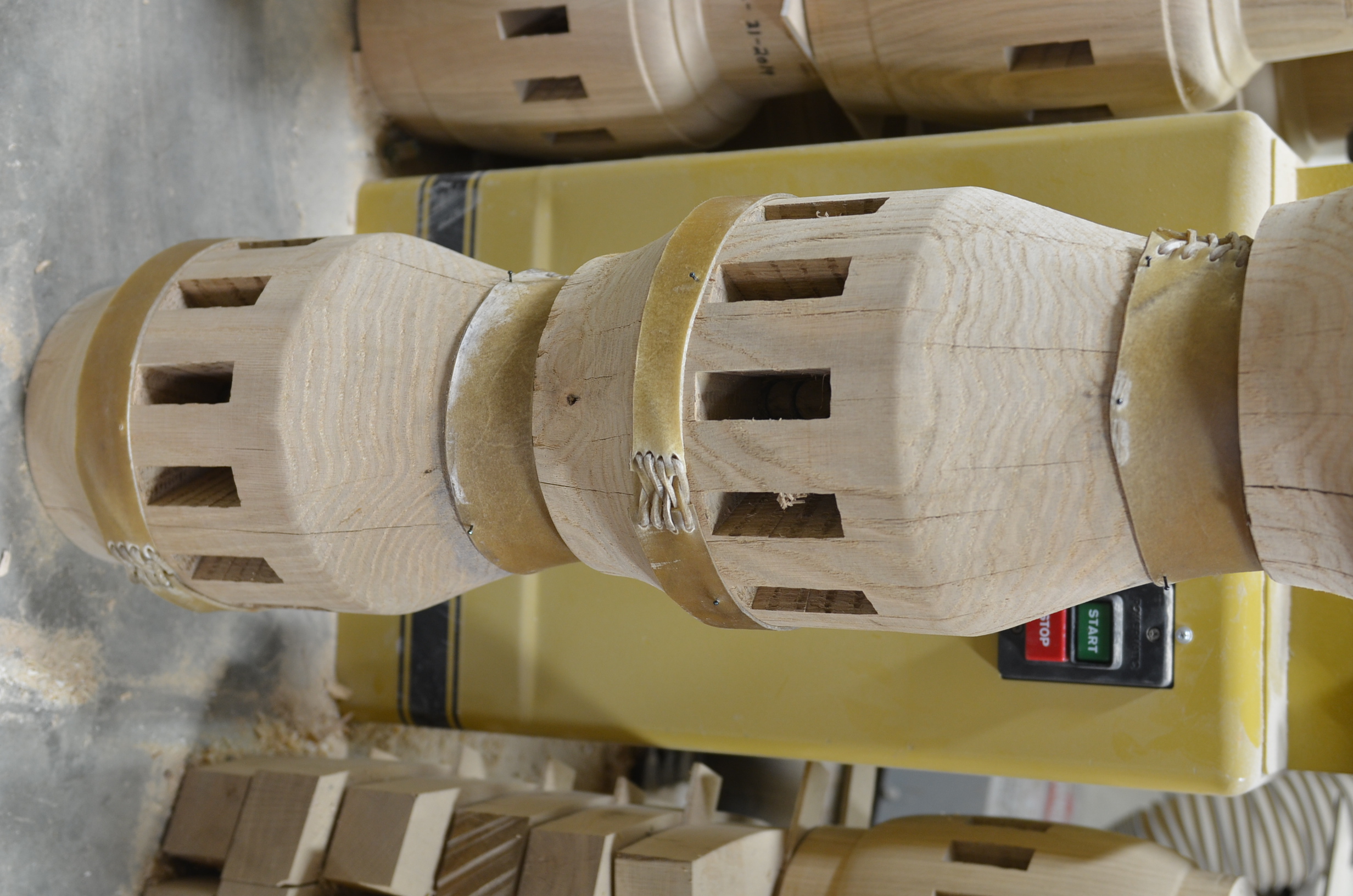
Hubs were shaped from a single piece of wood and hubs were banded using rawhide for added durability.
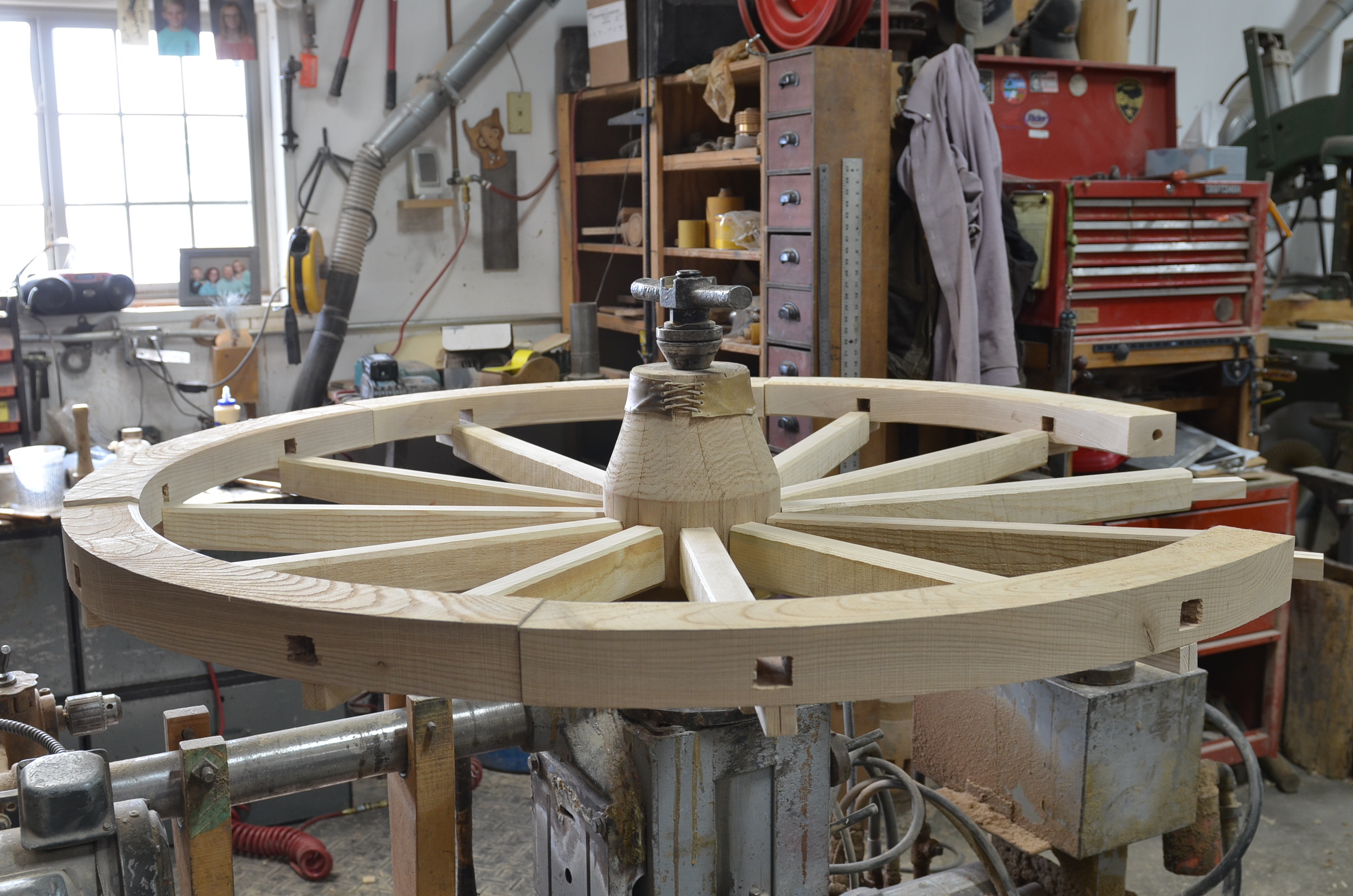
Rough hewn spokes and sawn felloes are readied for assembly of the Red River Cart wheels.
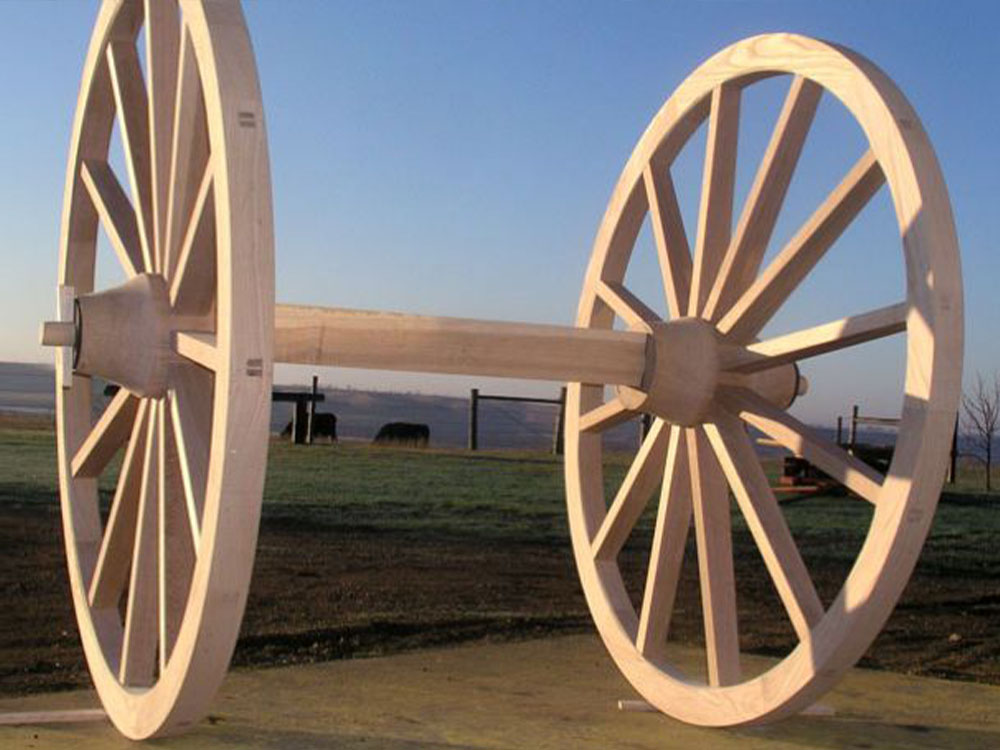
Red River Cart Wheels and Axle built by Hansen Wheel & Wagon Shop.
"Squeaky wheels - one of the signature characteristics of the Red River ox carts that hauled bison furs from the Dakota Territory to St. Paul in the early to mid-1800s. They say that the squeaking noise could be heard from two to six miles away. One source even mentioned 10 miles!
It was because the Red River ox carts were made entirely of wood with strips of animal hide to lash the pieces together. The axle - the pole that connects the two giant wheels to the cart - was also made of wood, usually something strong like oak.
The axles couldn't be greased, because grease would pick up all the dust on the trail and quickly wear away the wood. Even so, on a typical trip along the trails and back, a driver would go through multiple axles. They brought spares along because of this.
So...when you have wooden wheels turning on a wooden axle, you've suddenly got a recipe for a loud, continuous squeak.
Why not use metal on the axle? The driver had to rely on native, easy-to-find materials and wood was usually easy to find. If part of the cart broke, a replacement piece could be quickly fashioned, and the noisy ox cart would be on its way again." Excerpt from Ox Cart Angel.
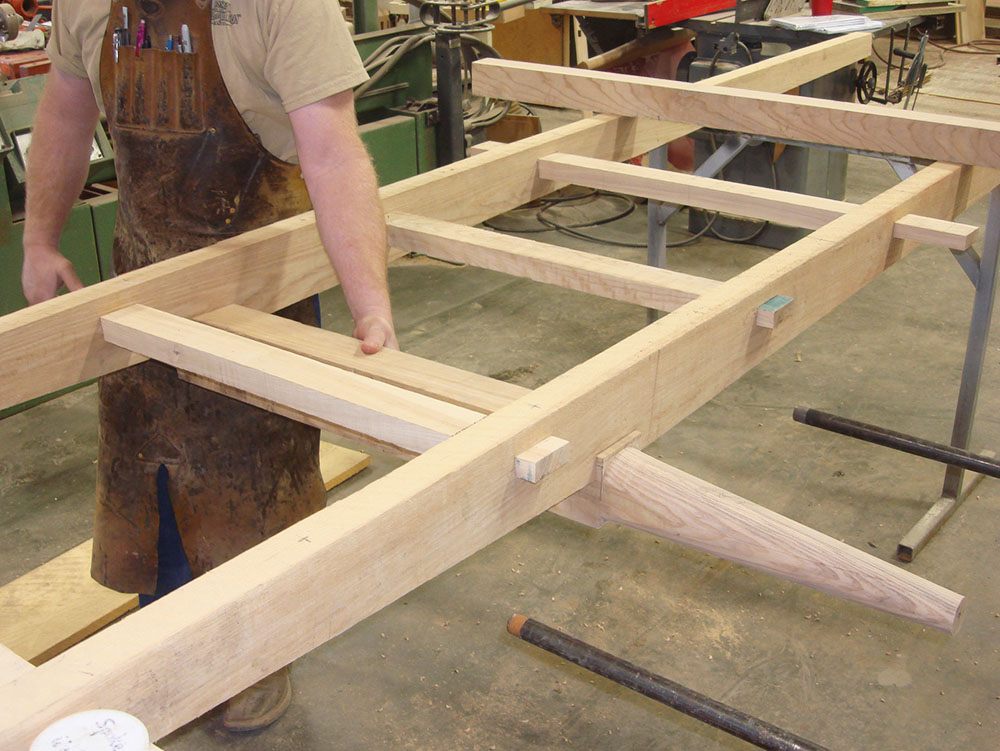
Cart frame with mortice and tenon joinery and notches for axle.
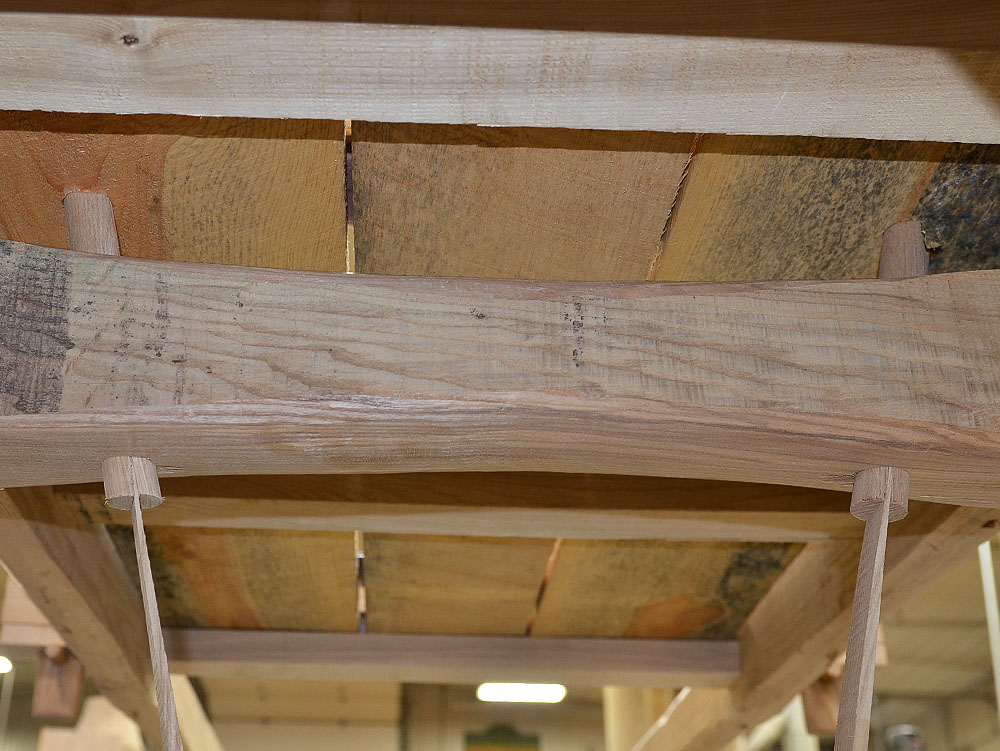
Angled pins secure the axle to the cart frame.
The shafts were integrated into the framework of the "box" and where either straight and converging, or bent to bring them closer together at the animal’s collar. The frame and axle of the Red River Cart used mortice and tenon joinery for strength. Axles were notched into the reaches and angled pins were used to hold it to the frame. The box was formed using pegged sticks placed upright for the sides and boards for "endgates" on the front and back. Angled pins secure the axle to the cart frame.
The shafts were integrated into the framework of the "box" and where either straight and converging, or bent to bring them closer together at the animal’s collar. The frame and axle of the Red River Cart used mortice and tenon joinery for strength. Axles were notched into the reaches and angled pins were used to hold it to the frame. The box was formed using pegged sticks placed upright for the sides and boards for "endgates" on the front and back.
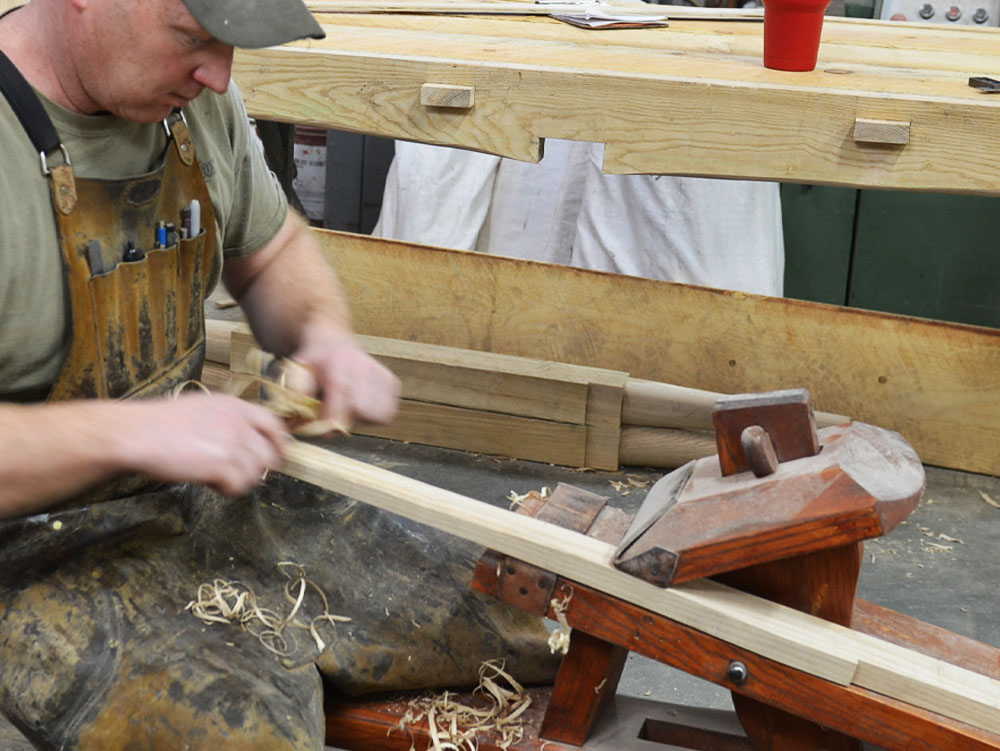
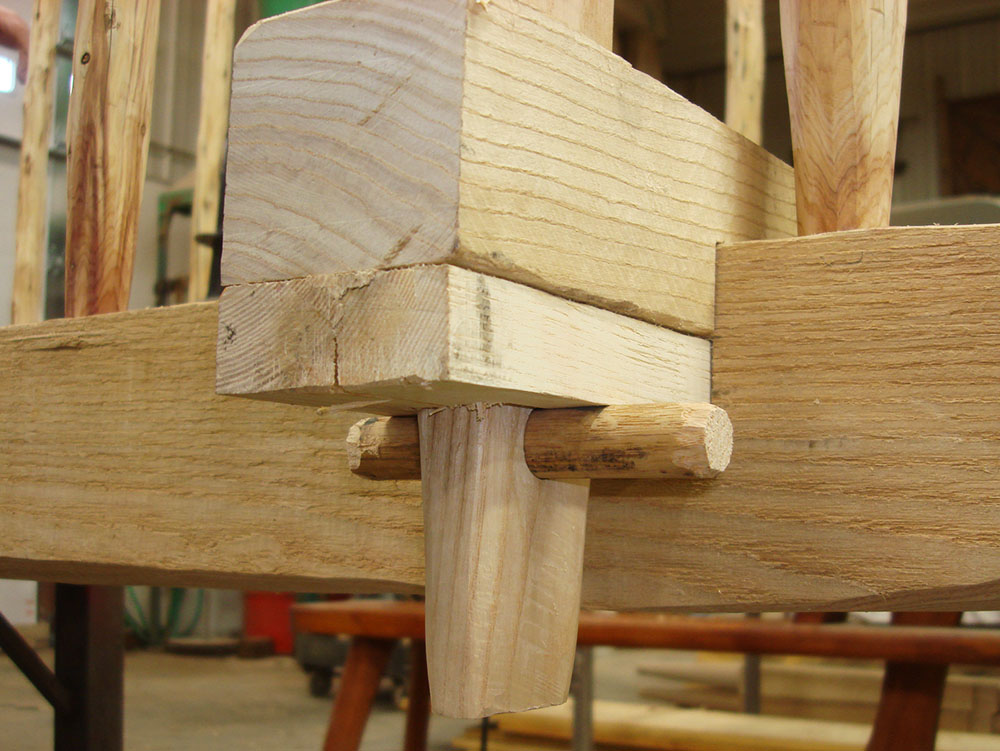
Bolster stakes are shaped and are morticed into the framework and pegged to hold it in place.
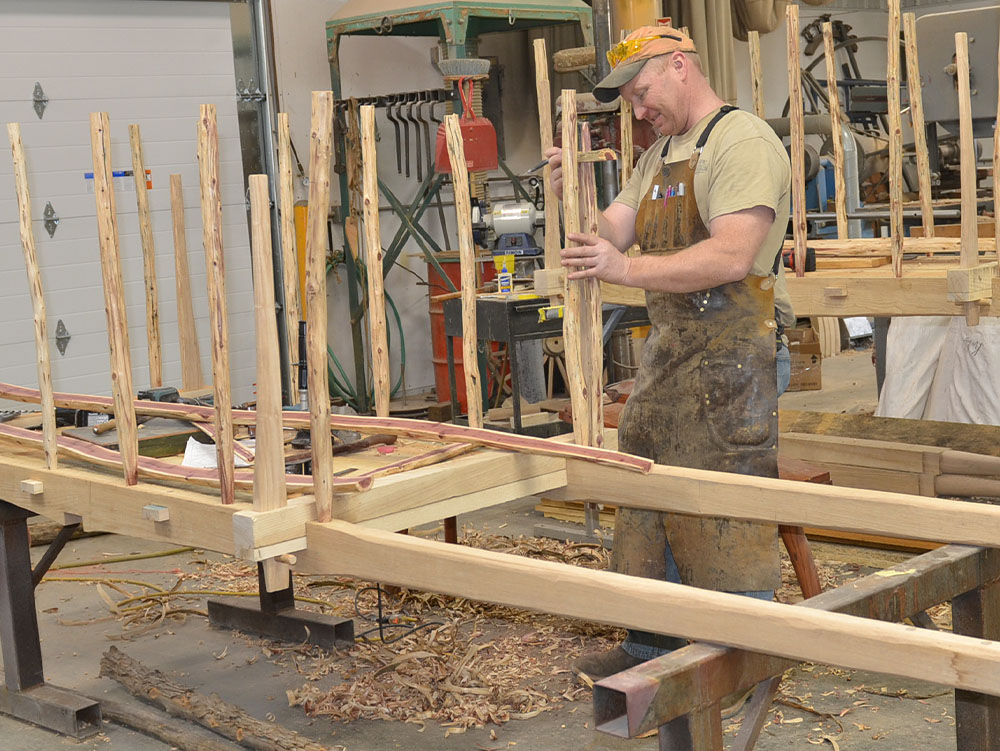
Bark is stripped from red cedar poles to create box stakes that are then fitted into the cart frame.
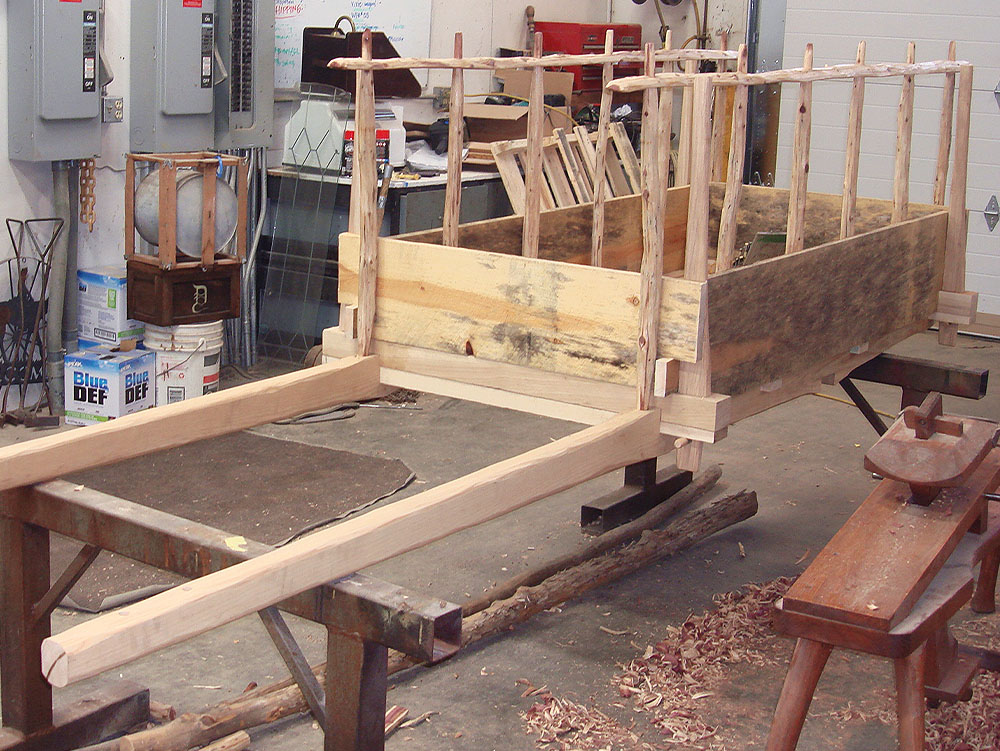
Side boards and "endgates" are notched and fitted into place between bolster stakes and cedar box stakes.
"(The Red River Cart) is simply a light box with a pair of shafts, mounted on an axle connecting two enormous wheels . . . The wheels are broad in the felloes (rims), so as not to cut through the prairie sod. They are long in the spokes, so as to pass safely through fords and mudholes. They are very much dished so that they can be strapped together and rawhide stretched over them to make a boat. The whole cart is made of wood; there is not a bit of metal about it, so that, if anything breaks, the material to repair it is easily found." Description of a Red River Cart as printed in Harpers Magazine in 1878.
